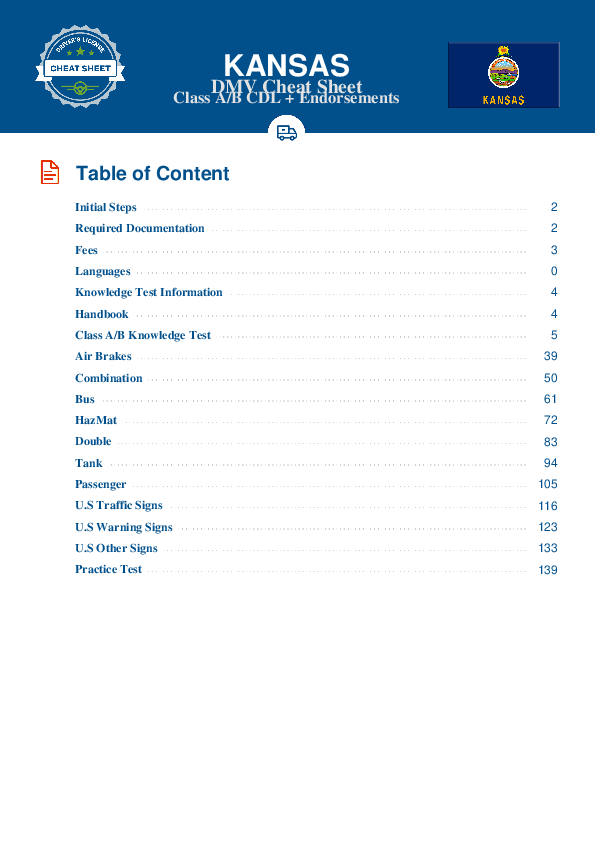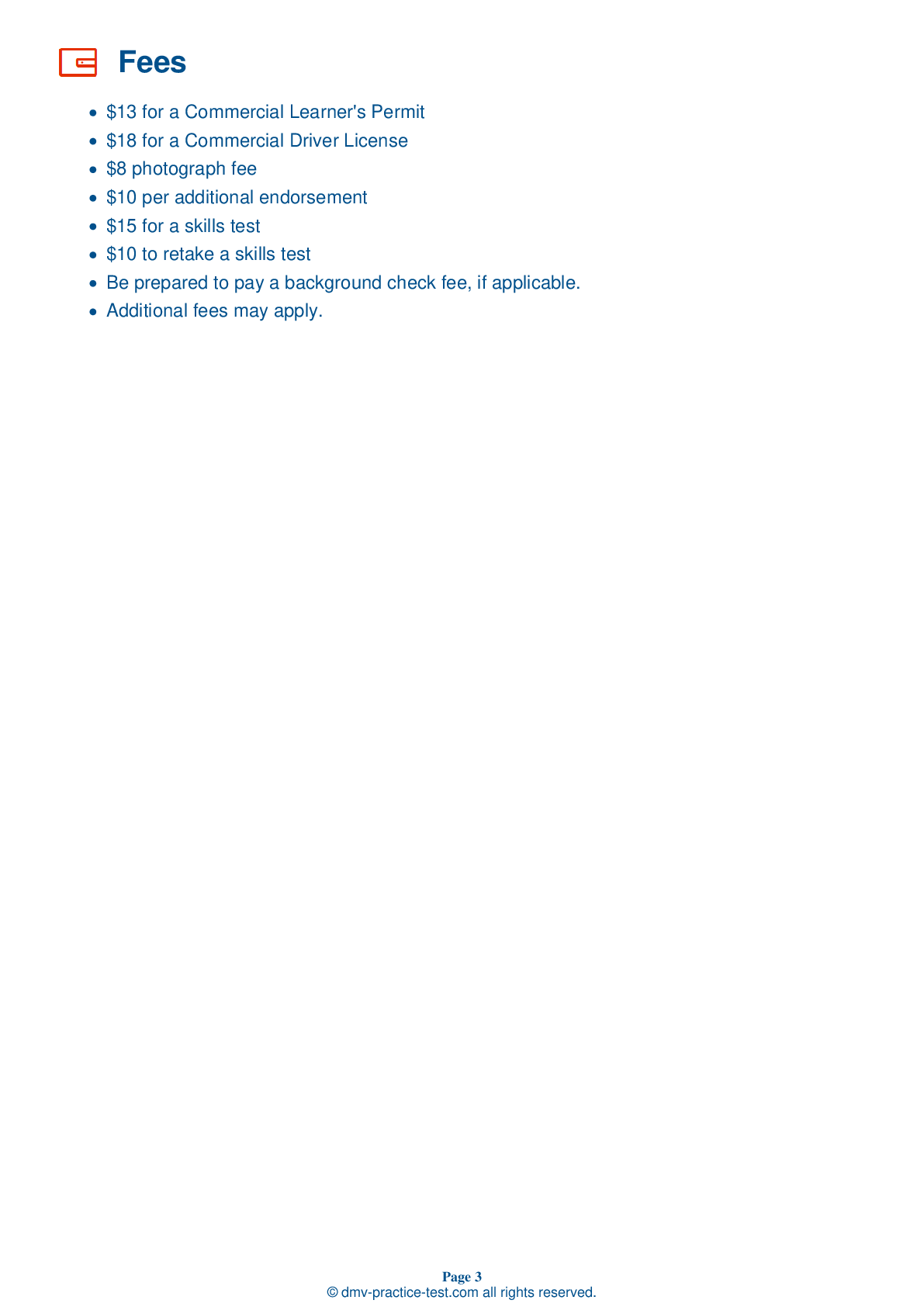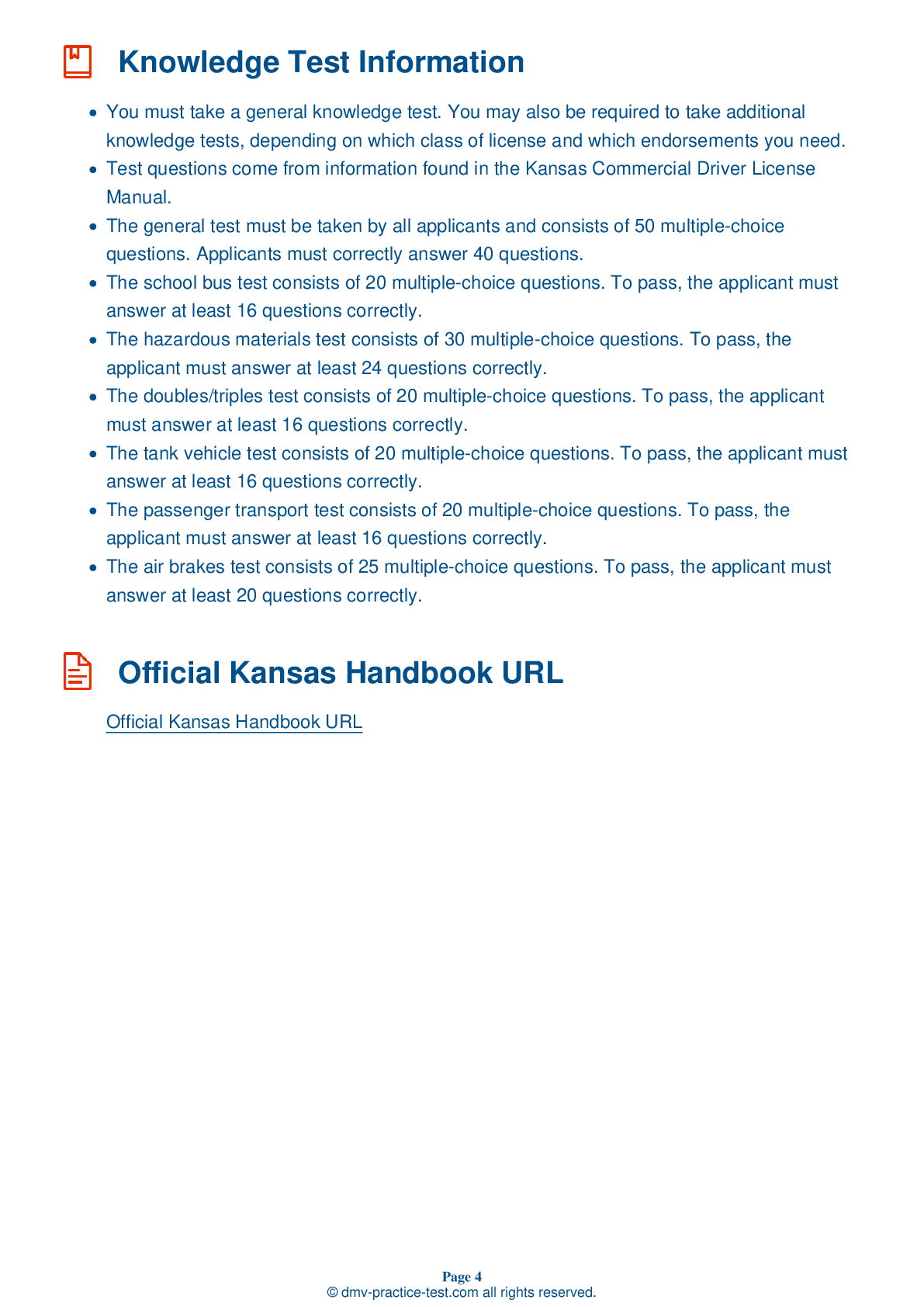Class A Driving Test | Kansas 2025 #2 Page 7 of 7
Train for FREE online with our Kansas class A license test. The official exam test consists of several obligatory parts, with all of them checking your knowledge of different blocks of road rules. If you need to obtain a KS CDL class A permit in 2025, practice as much as possible. Free sample tests published on our website will help you check and improve your knowledge and boost your grades. Please bear in mind that CDL class A requirements may vary from state to state.
43 . While driving any vehicle in Kansas:
It is both illegal and dangerous to send or read text messages while driving in the state of Kansas.
44 . When a vehicle is started, warning lights and buzzers:
After an engine is started, the warning lights and buzzers for oil, coolant, charging circuits, and the Anti-Lock Braking System (ABS) should go out right away.
45 . Hydroplaning usually occurs:
In places where water collects on the road, it is possible for a vehicle to hydroplane. Low tire pressure or worn tire tread makes this more likely to happen. If there is enough water on a road surface, hydroplaning can occur at speeds as low as 30 mph.
46 . Broken suspension parts:
The suspension system is responsible for supporting a vehicle, supporting its load, and keeping its axles in place. When inspecting your vehicle, check for damaged or missing spring hangers, spring leaves, shock absorbers, u-bolts, and frame members. Broken parts in the suspension system are extremely dangerous.
47 . Which of the following is not an activity that causes a distraction?
Anything that takes your attention away from driving can be a dangerous distraction. This includes eating, drinking, smoking, or adjusting the vehicle's audio and climate controls.
48 . Drivers are usually the least alert:
Drivers are usually less alert when driving at night, especially after midnight.
49 . When driving:
It is important to communicate your intentions to others on the road. Make sure to signal before turning or changing lanes, even if no other vehicles are nearby.
50 . A vehicle should be equipped with all of the following, except:
Commercial vehicles should always carry the proper emergency equipment. Be sure your vehicle is equipped with at least one fire extinguisher; spare electrical fuses, unless the vehicle is equipped with circuit breakers; and warning devices for parked vehicles, such as warning triangles, fuses, or liquid burning flares.
See the exact questions that will be on the 2025 Kansas DMV exam.
99.2% of people who use the cheat sheet pass the FIRST TIME
Lillian MCcranie explains how our CDL study guide was helpful in passing the exam and recommends it to everyone.
Cameron tells us how he purchased the CDL exam, and found it to be a useful tool which helped him pass the exam and find a job.



